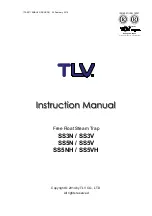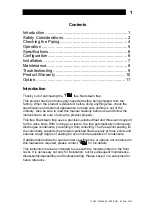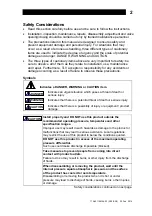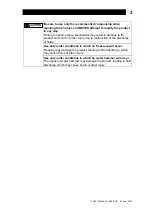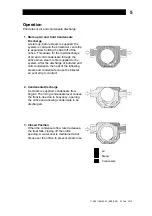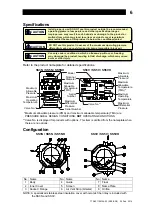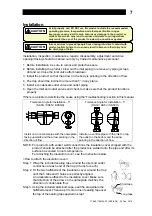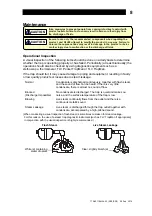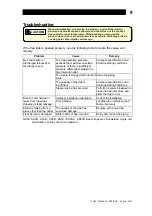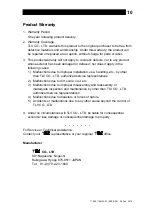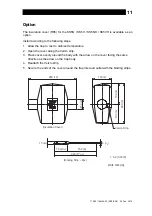
8
Maintenance
Take measures to prevent people from coming into direct contact with
product outlets. Failure to do so may result in burns or other injury from
the discharge of fluids.
CAUTION
Be sure to use only the recommended components when repairing the
product, and NEVER attempt to modify the product in any way. Failure to
observe these precautions may result in damage to the product or burns
or other injury due to malfunction or the discharge of fluids.
CAUTION
Operational Inspection
A visual inspection of the following items should be done on a daily basis to determine
whether the trap is operating properly or has failed. Periodically (at least biannually) the
operation should also be checked by using diagnostic equipment such as a
stethoscope, thermometer, TLV Pocket TrapMan or TLV TrapMan.
If the trap should fail, it may cause damage to piping and equipment, resulting in faulty
or low quality products or losses due to steam leakage.
Normal : Condensate is discharged continuously, together with flash steam,
and the sound of flow can be heard. If there is very little
condensate, there is almost no sound of flow.
Blocked
(Discharge Impossible)
: No condensate is discharged. The trap is quiet and makes no
noise, and the surface temperature of the trap is low.
Blowing : Live steam continually flows from the outlet and there is a
continuous metallic sound.
Steam Leakage
: Live steam is discharged through the trap outlet together with
condensate, accompanied by a high-pitched sound.
(When conducting a visual inspection, flash steam is sometimes mistaken for steam leakage.
For this reason, the use of a steam trap diagnostic instrument [such as TLV TrapMan if appropriate]
in conjunction with the visual inspection is highly recommended.)
Flash Steam
Live Steam Leakage
White jet containing
water droplets
Clear, slightly bluish jet
172-65119MAJ-03 (SS3/SS5) 25 Feb 2014

